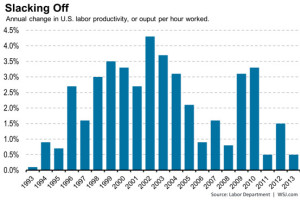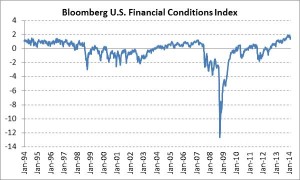Here’s a breakdown of the rally, by the numbers:
151.3%: The Dow Jones Industrial Average’s gains over the past five years, one of only six bull markets in history that have lasted this long.
782%: American Express Co.’s gain since March 2009, the biggest rally among the 30 Dow components. Walt Disney Co. is second, up 427%, and Home Depot Inc. rounds out the top three, up 352%.
47%: Exxon Mobil Corp.’s rally through the past five years, the worst-performing blue chip among components that spent all five years in the Dow.
177.6%: The S&P 500′s gain over the past five years.
50: The number of record highs for the broad S&P 500 over the past 12 months, including Friday’s record-setting close of 1878.04.
15.4: The S&P 500′s forward price-to-earnings ratio, up from 10.3 at the bear-market bottom, according to FactSet.
324.4%: The S&P 500 consumer discretionary sector’s rally, the top performer among the index’s 10 large-cap sectors. Financials is second best, up 259%, and industrials is third, up 242%.
68%: The rally for the S&P”s telecommunications sector, the worst performing large-cap sector.
241.8%: The technology-heavy Nasdaq Composite’s rally since the March 2009 bottom.
538.2%: Apple Inc.’s rally over the past five years.
250.6%: The gains for the Russell 2000 index of small-capitalization stocks off the bear-market low.
30.5%: The level of bearish sentiment — or expectations that stock prices will fall over the next six months, according to the weekly survey conducted by the American Association of Individual Investors released Thursday. By comparison bearish sentiment reached a record level of70.3% in March 2009.
6.7%: The current unemployment rate, as per Friday’s jobs report. By comparison, the unemployment rate was 8.7% in March 2009.


